
Tactics to stay ahead of the curve and boost efficiency with proactive support
Main illustration: Emil Wikström
For so many years, customer support was seen as a cost center – the first port of call for customer complaints. Now, it’s taking center stage as the value driver it truly is, enabling businesses to build lasting relationships with their customers, drive increased operational efficiency, and influence better customer satisfaction and retention.
Customers’ expectations of support are also changing dramatically as the support landscape continues to evolve. Long wait times and slow responses are no longer accepted as being good enough. Customers expect efficient, personalized support, which is why support leaders are turning to a conversational, messenger-based approach to help them strike that balance and offer personal support at scale.
“Proactive support is enabling companies like Tanda, TrueCommerce, Spendesk, Living Spaces, and SMARTY to support their customers before they even need help”
The three pillars that underpin conversational support – proactive, self-serve, and human support – work together to empower support teams to tackle known issues before they arise, leverage automation and bots to power support at scale, and free up valuable time for their team to focus on complex and urgent customer issues that need a human touch. Proactive support is enabling companies like Tanda, TrueCommerce, Spendesk, Living Spaces, and SMARTY to support their customers before they even need help, resulting in them being able to scale their support without dramatically increasing headcount, drive down inbound conversation volumes by up to 80% for temporary issues, and achieve sky-high customer satisfaction scores of upwards of 90%. Here’s how they’re doing it.
What is proactive support?
Proactive support is a strategic approach to anticipating and delivering on your customers’ support needs, where they are, before they ask for help.
Moving from a reactive to proactive approach
Traditionally, businesses would have adopted a reactive approach to supporting their customers. A customer emails or calls in, the ticket gets logged in a queue, they wait until a support rep is available to deal with the query, and the rep works with the customer to resolve their issue – one at a time. Not only is this approach not scalable, it’s also not a great experience for your customer or an efficient way of working for your team.
Proactive support offers a way to get ahead of known issues and provide customers with help before it’s even needed, driving down the number of queries that will inevitably reach your support team. By leveraging a combination of technology and the knowledge and expertise of your team, you can anticipate customer needs and use targeted messages, banners, custom bots, and more to alert your customers to temporary issues or provide a little bit of extra help where it’s needed.
Powering support at scale
According to a commissioned study conducted by Forrester Consulting on behalf of Intercom in April 2021, Drive Conversational Experiences For A Future-Ready Customer Support Strategy, 59% of support leaders and decision makers find a lack of proactive support to be a barrier to conversational support at scale. For large and growing companies, the ability to offer customer support to an ever-expanding customer base is crucial in being able to scale successfully – as long as it’s not at the expense of a personalized experience.
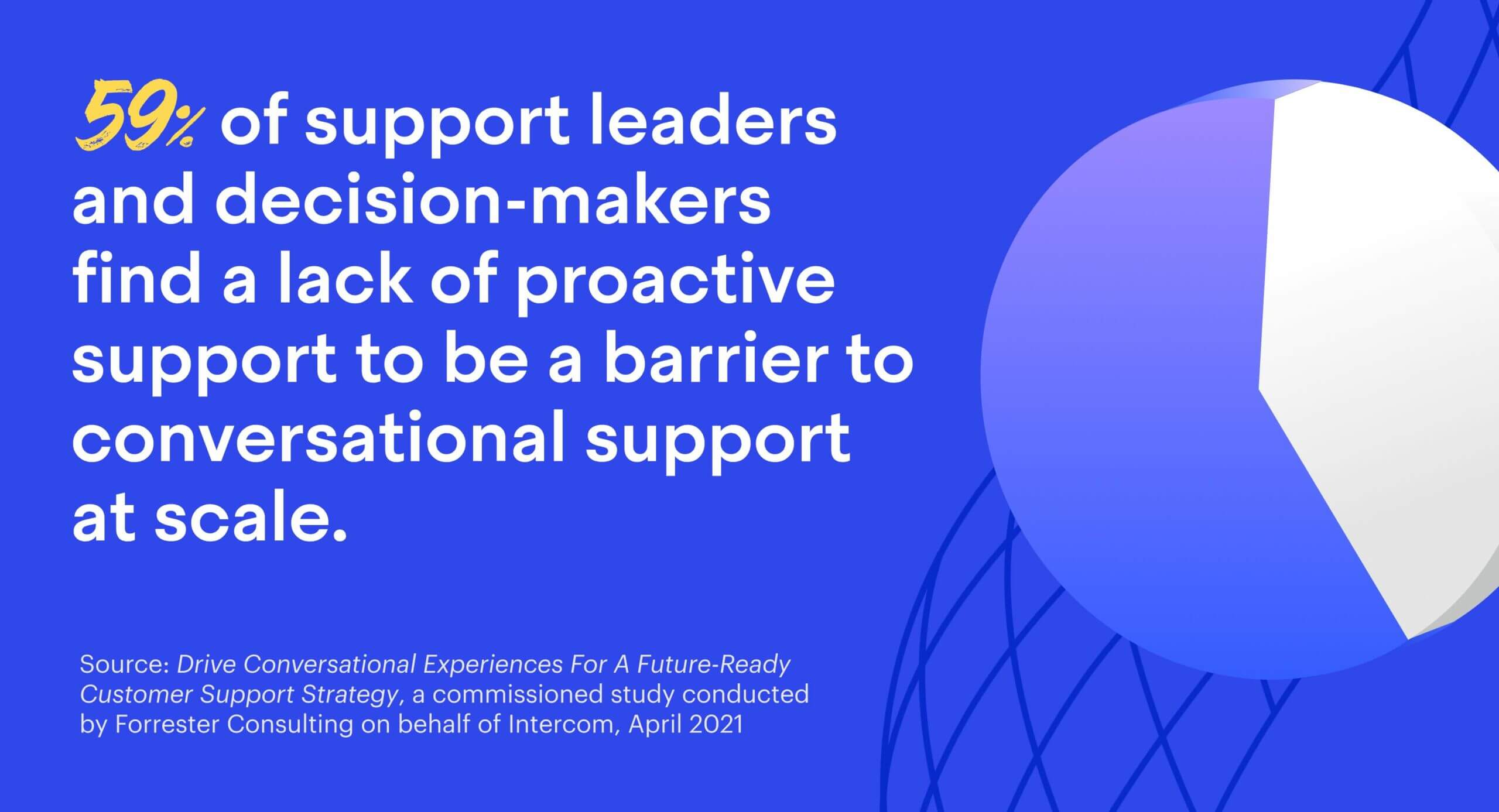
By using technology to detect signals in their product and monitor trends in inbound conversations from customers, workforce management platform Tanda is leveraging proactive support to stay ahead of the curve and offer help to customers before they reach out to the support team. In doing this, they’ve been able to dramatically reduce their inbound conversation volume and boost the efficiency of their support – while also keeping their customer satisfaction score above 93%.
“Our support team is around the same size as it was two years ago and our client base is probably twice as big as it was then. We’re still achieving better first-response times and are able to offer better support across our customer base at scale. We attribute a large part of that to being able to be proactive with customers”
Ryan Johnston, Head of Customer Success at Tanda, explains that as their customer base has grown in recent years, the team has been able to scale their support without dramatically increasing headcount, which has been a big benefit to the team. “Our support team is around the same size as it was two years ago and our client base is probably twice as big as it was then,” he says. “We’re still achieving better first-response times and are able to offer better support across our customer base at scale. We attribute a large part of that to being able to be proactive with customers. We’re constantly releasing product improvements, and sometimes these changes can impact things, so we want to ensure that we’re always proactive with communications so that customers know what to expect and when new functionality has become available to them.”
Increasing support efficiency
One of the biggest benefits of proactive support is that, by offering help to your customers before they know they need it, you can reduce the number of inbound queries your support team would usually receive when customers notice or experience an issue. In doing this, you can not only give your customers a better experience, but can also free up your team’s time to focus on more urgent or complex customer issues.
“By proactively targeting specific customers who are affected when issues come up, we’re able to let them know we’re already on it and how they can stay updated. In doing this, we’ve seen a reduction of almost 80% in the contact rate for temporary issues, as our customers already know how to take action”
Integrated commerce solutions experts TrueCommerce can attest to this benefit. Given the high number of active users signed in on their platform at any given time, it’s crucial for the team to be able to quickly communicate with users when temporary issues occur. With Intercom, the team can identify which customers are online and affected by a temporary outage or issue and send targeted outbound messages to proactively communicate with those affected to let them know that they’re aware of the issue and working on a fix. “By proactively targeting specific customers who are affected when issues come up, we’re able to let them know we’re already on it and how they can stay updated. In doing this, we’ve seen a reduction of almost 80% in the contact rate for temporary issues, as our customers already know how to take action,” says Christian Parker, Director of Managed Services at TrueCommerce.
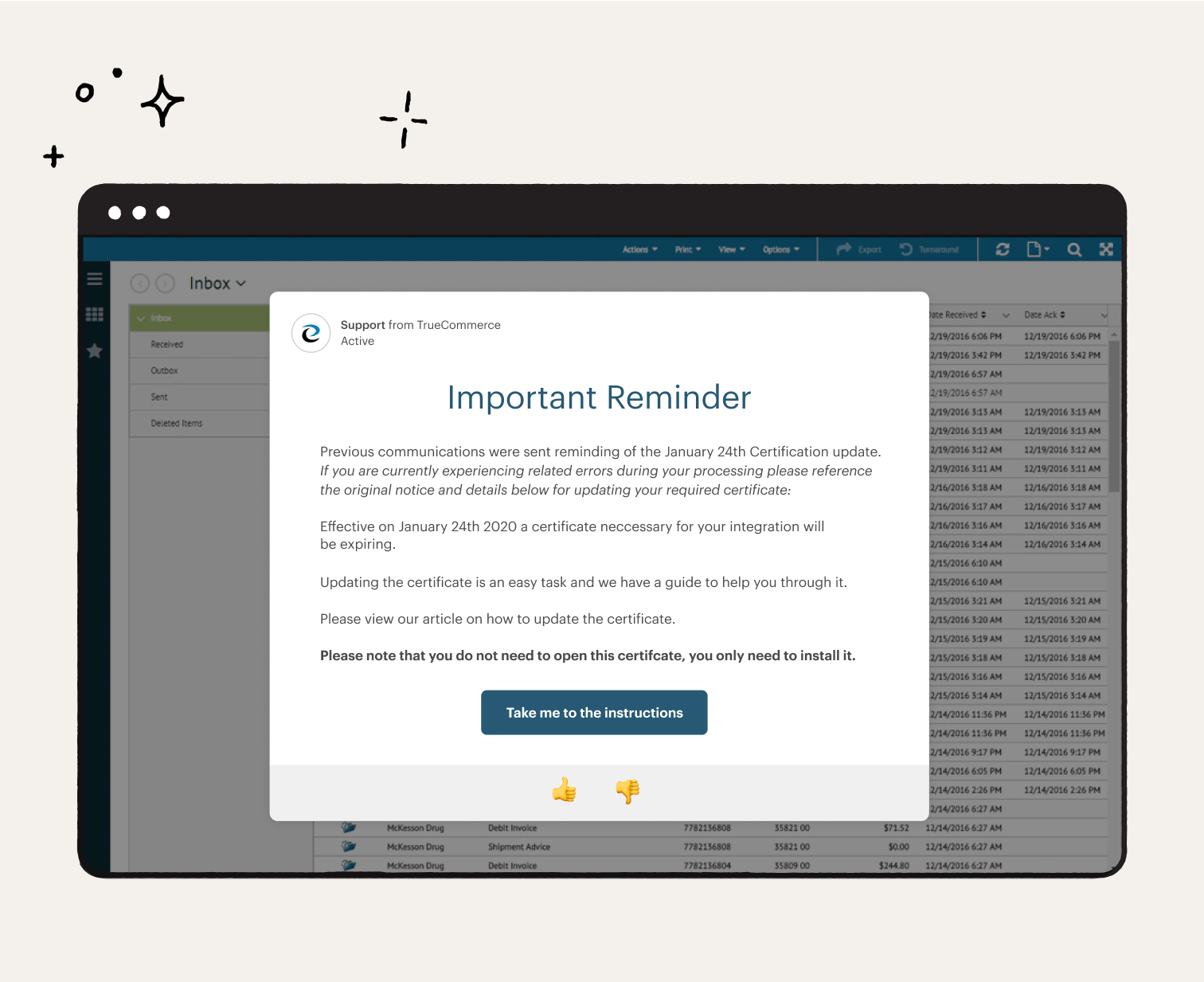
Stepping in at the right time
The ability to offer proactive support hinges on sending the right message, at the right time, and in the right place. For one-off issues, communicating through the right channel is crucial. And for areas where you can predict customer needs in order to proactively support them, it requires a deep understanding of your customers, their journeys with your product, and any stumbling blocks they might be likely to encounter where you can jump in and help.
A modern conversational support solution can enable your team to reach customers in the right place and at the right time, and also spot recurring trends in the customer conversations you’re receiving, helping you to map out the points in their journeys at which they may need a little bit of extra assistance. Gill Fisher, Head of Customer Experience & Delivery at SMARTY, explains that the legacy systems she used prior to Intercom were clunky and didn’t allow for her team to be proactive in their approach to supporting their customers.
“When I’ve used other systems, you’d have to take all your data, put it in a spreadsheet, and do some analysis. Intercom’s Conversation Topics tells me at the click of a button. It allows us to be proactive in where we help our customers most, which is amazing”
Using Intercom, Gill and her team were able to leverage the Conversation Topics reporting feature to dig into trending topics that were emerging from inbound customer questions in order to identify common themes, sticking points, and potential areas where other customers might need additional help or education. From there, Gill and the team can anticipate customer needs and proactively reach out to lend their customers a helping hand. “When I’ve used other systems, you’d have to take all your data, put it in a spreadsheet, and do some analysis,” she says. “Intercom’s Conversation Topics tells me at the click of a button. It allows us to be proactive in where we help our customers most, which is amazing.”
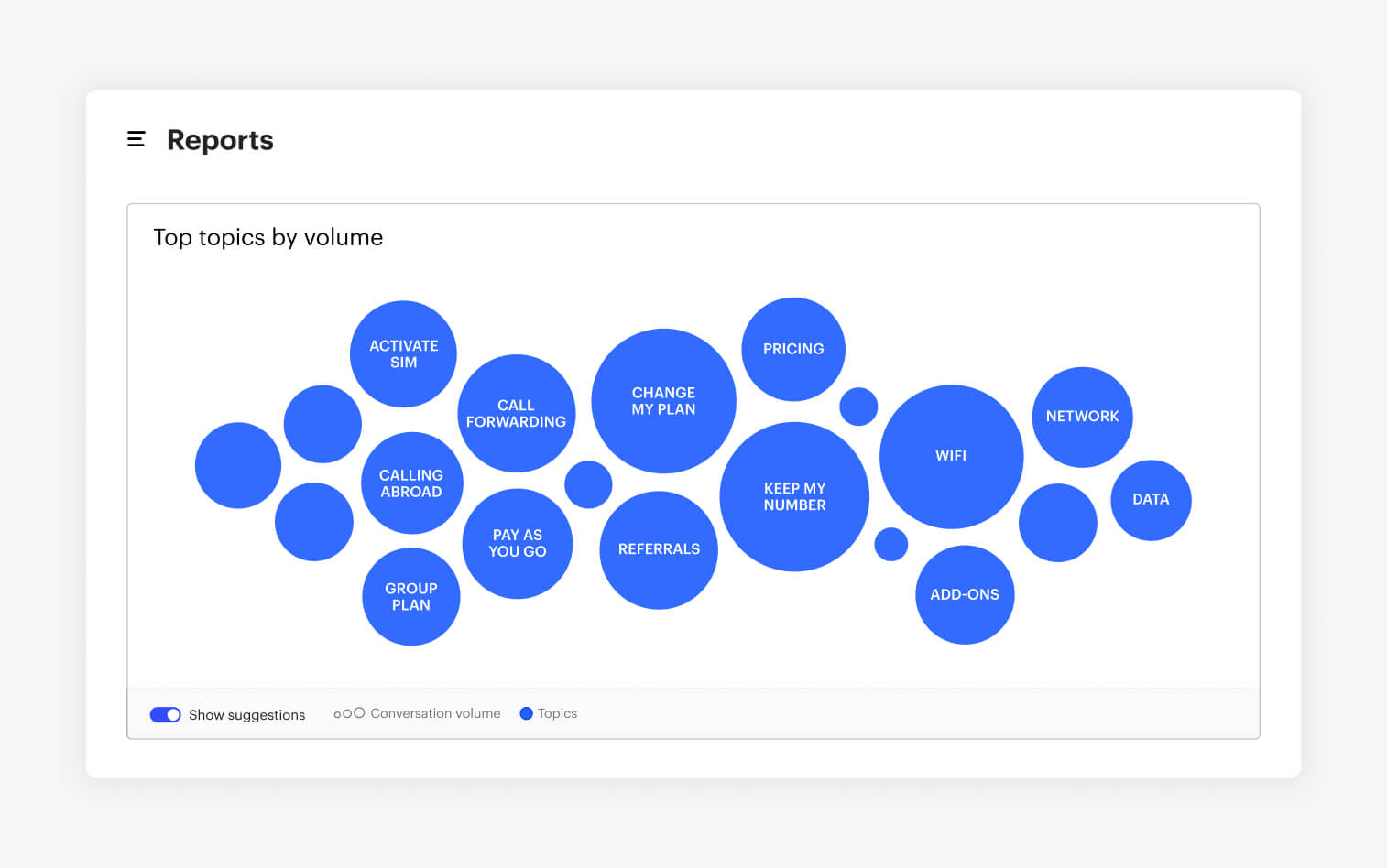
Meeting customers where they are
Conversational support offers the ability to communicate with your customers in a number of ways, from adding an unobtrusive banner to your website to sending a pop-up notification when you know a customer is logged in and experiencing an issue. Here are some examples of how our customers are leveraging different message types in Intercom to stay ahead of the curve and proactively support their own customers.
Outbound Messages
Leading European logistics platform Stuart uses Intercom to offer support to both its clients and delivery partners. The team leverages proactive support capabilities in Intercom to send important alerts that may affect deliveries, such as adverse weather conditions or local events that may lead to increased traffic or delays, and also to remind delivery partners of necessary checks they need to make during delivery, reducing any potential issues and enhancing their overall quality of service.
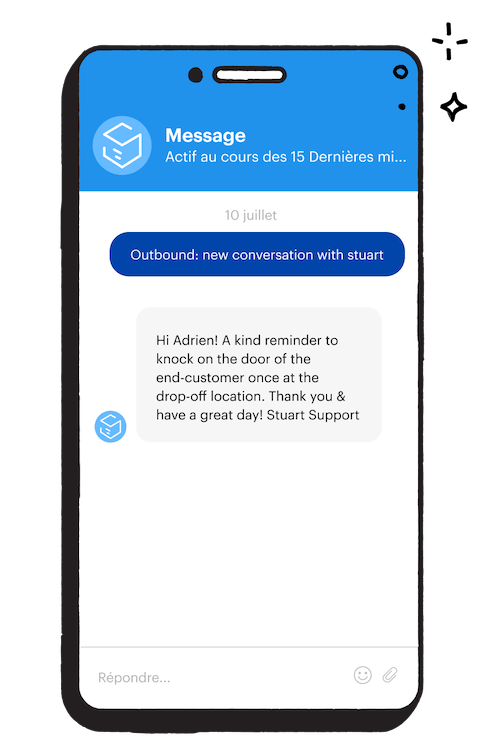
Banners
The Rugs.com team uses Banners to display notices across their website and keep customers informed when temporary issues pop up, ensuring that they have a smooth shopping experience and that the support team doesn’t get overwhelmed with inbound queries when a problem arises. “Banners is a great product for being able to proactively communicate with customers without having to change something on the website with the help of a developer,” says Grayson Bagwell, Director of Business Development at Rugs.com.

Technology subscription platform Grover also uses Banners to proactively communicate with customers and reduce the inbound conversation volume coming to the support team. By adding targeted banners to their website, they’re able to let customers know about important updates related to their account, such as whether there’s an outstanding balance that needs to be paid, and have been able to successfully prompt action from customers, seeing an impressive 36% completion rate on their “Outstanding amount” banner.
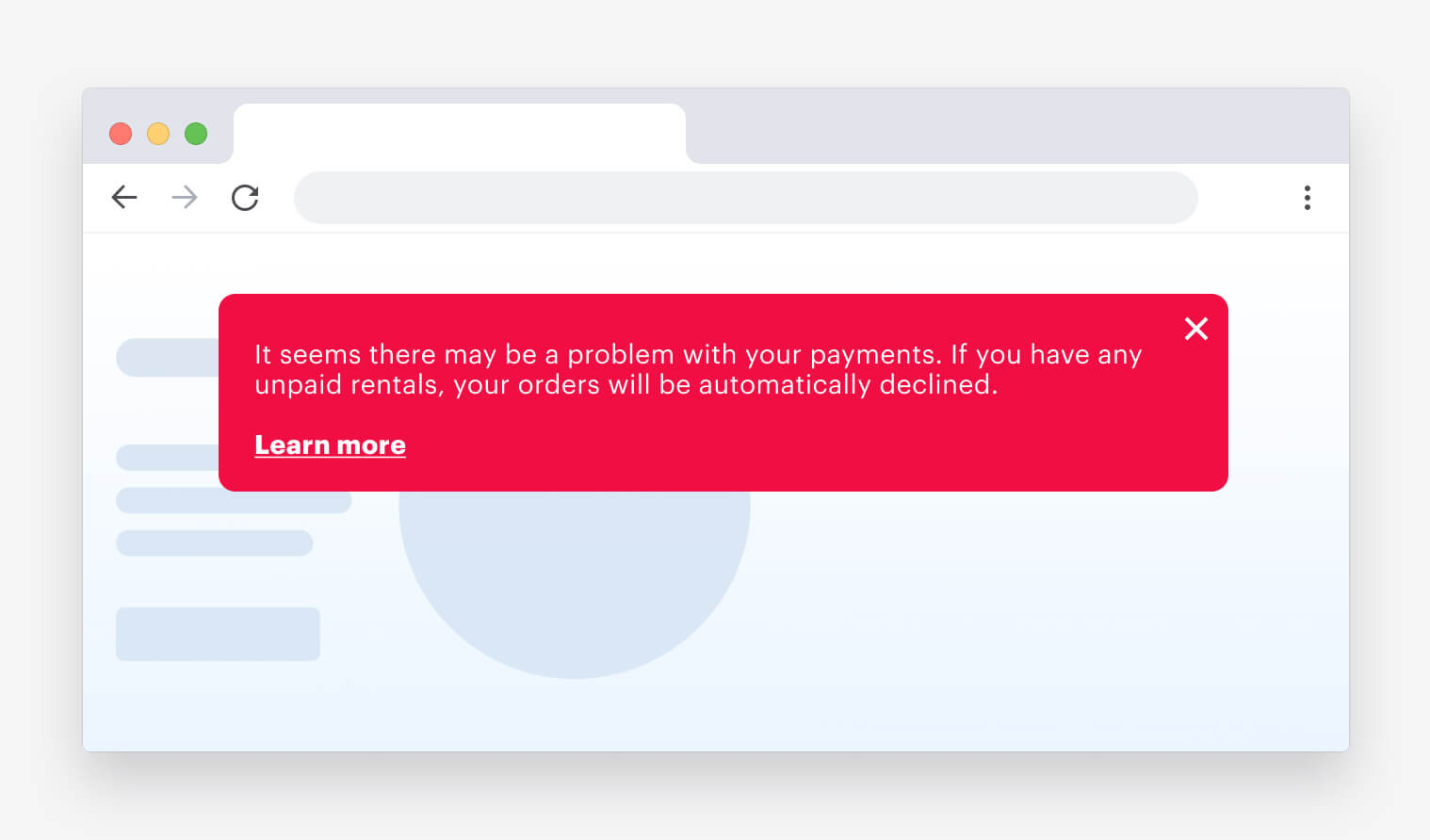
Product Tours and Mobile Carousels
With Product Tours and Mobile Carousels, your team can create personalized walkthroughs of your product, or any new features you launch, to ensure that customers are getting a tailored experience and are set up for success from the get-go. Banking app CAKE uses Mobile Carousels to bring customers through some of their more complex workflows and offer a little extra help where it’s needed.
“Intercom’s Mobile Carousels feature is our proactive support lifeline. We’re able to launch custom carousels that integrate seamlessly with our mobile app to help customers solve common issues and improve their experience”
Peter Van Hees, Co-founder and Head of Product at CAKE, says, “Intercom’s Mobile Carousels feature is our proactive support lifeline. We’re able to launch custom carousels that integrate seamlessly with our mobile app to help customers solve common issues and improve their experience. Since we started using Mobile Carousels to proactively support our customers, we’ve seen a big reduction in inbound support requests.”
Driving increased customer satisfaction and retention
The ability to drive fast resolutions and deliver best-in-class experiences for customers is a top focus for support teams – especially now, when customer expectations are at an all-time high. With conversational support, support teams can be empowered to create experiences that strike the right balance between being personal and efficient, while also meeting – and exceeding – customers’ high expectations. Pete Franco, VP of E-commerce at Living Spaces, explains that having recently adopted proactive support, his team has big plans to build on how they proactively support their customers in the future. “Proactive support is really the big thing, and we’re only getting started,” he says. “We’re going down that path and it’s not something small – it’s a complete culture change.”
“We’re convinced that proactive support is something we should heavily invest in if we want to maintain the highest quality of support”
Adding to this sentiment, Vincent Terol, Head of Customer Success at spend management platform Spendesk, points to his team’s focus on proactive support in the coming year, saying, “We want to be able to identify what the recurring patterns are, whether they’re transaction failures or problems within the product, so we can take action and follow up with personalized messages to customers. We’re convinced that proactive support is something we should heavily invest in if we want to maintain the highest quality of support.”
To learn more about how Intercom customers are leveraging proactive support to reduce inbound conversation volume, offer personalized support at scale, maintain a high level of customer satisfaction, and more, check out our customer stories.








